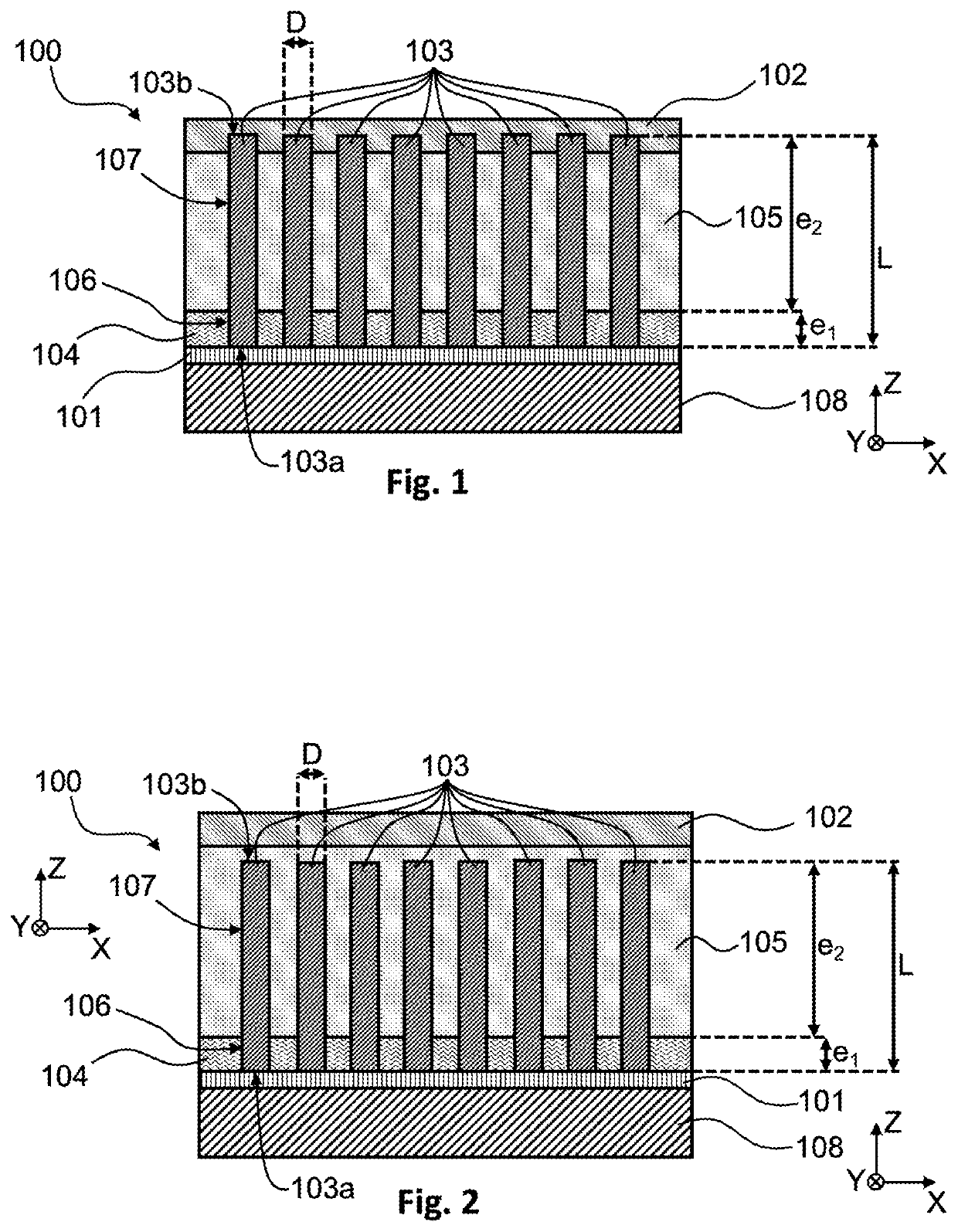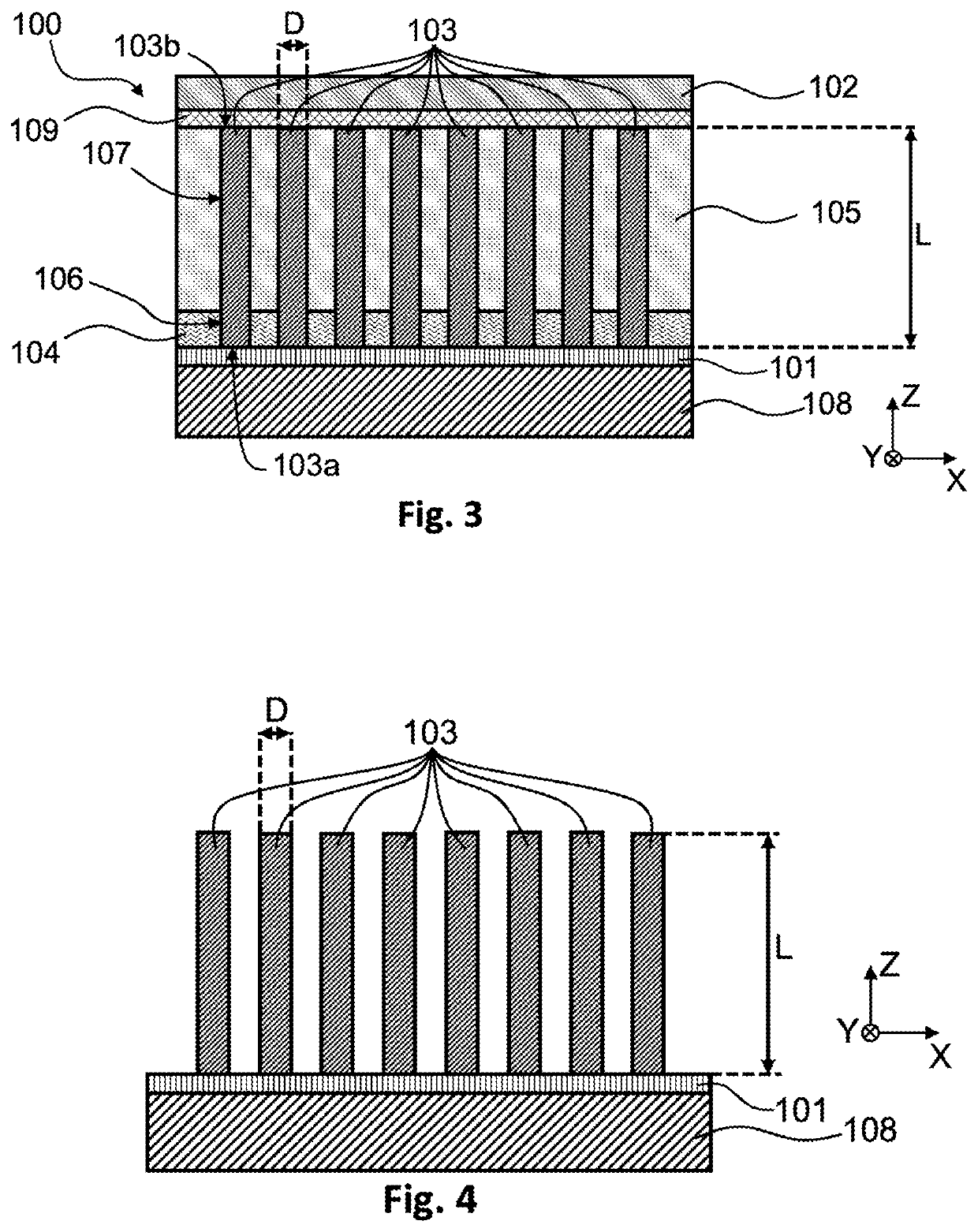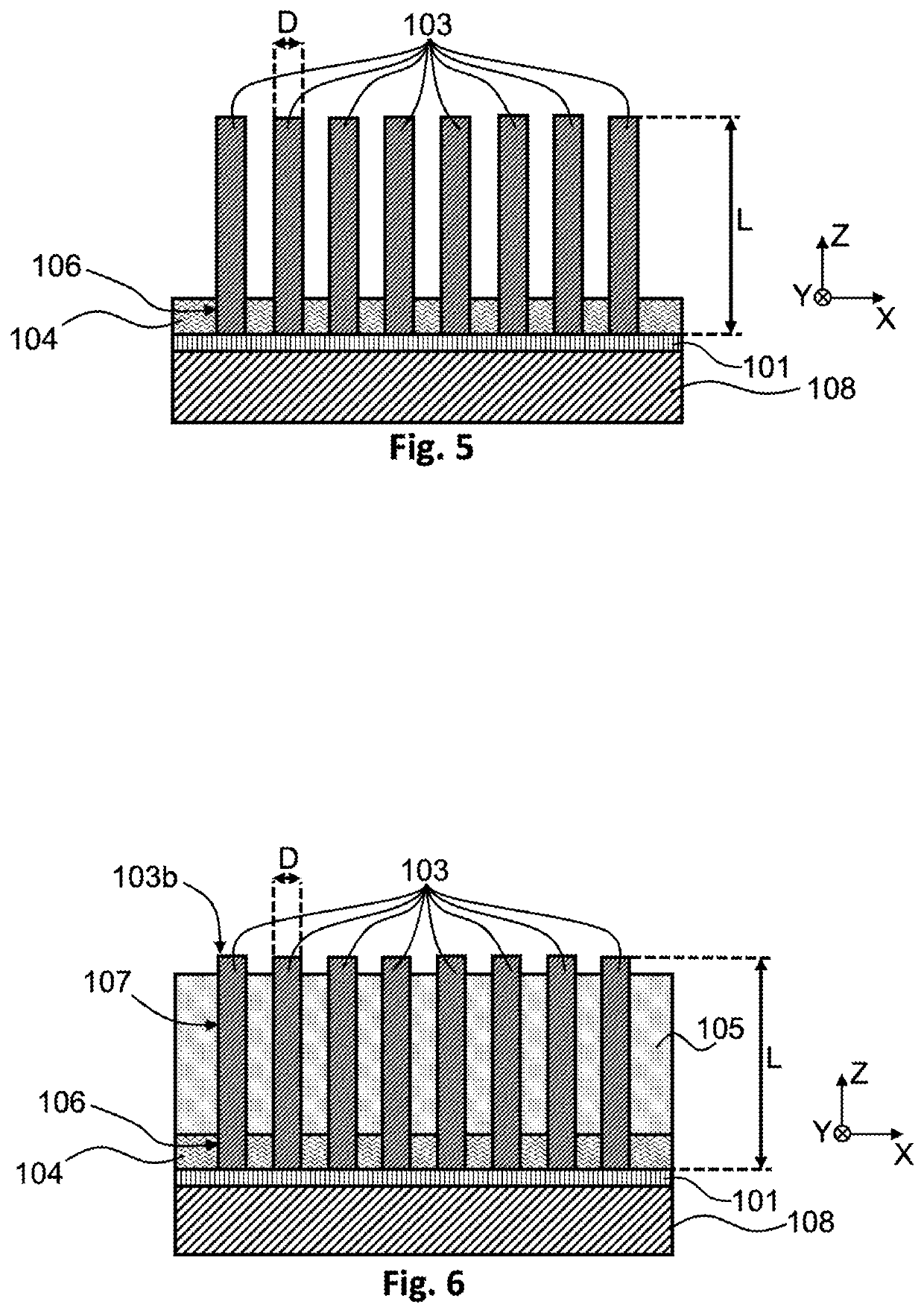Piezoelectric device with piezoelectric elongate nano-objects
a piezoelectric and nano-object technology, applied in the field of piezoelectric devices, can solve problems such as the absence of matrix, and achieve the effect of satisfactory freedom of deformation good strength of piezoelectric elongate nano-objects
- Summary
- Abstract
- Description
- Claims
- Application Information
AI Technical Summary
Benefits of technology
Problems solved by technology
Method used
Image
Examples
first embodiment
[0117]To obtain the piezoelectric device 100 according to this first embodiment, the step of forming the second layer 105 is such that it leaves the second longitudinal ends 103b of the piezoelectric elongate nano-objects 103 accessible in order to enable the formation of the second electrode 102 in contact with these second longitudinal ends 103b. In other words, on completion of the formation of the second layer 105, portions of each of the piezoelectric elongate nano-objects 103 protrude from the second layer 105 as shown for example in FIG. 6. Afterwards, the second electrode 102 is formed on the second layer 105 and is in contact with the portions of the piezoelectric elongate nano-objects 103 protruding from the second layer 105 as shown in FIG. 1.
[0118]According to the first embodiment, it is possible to distinguish two cases:[0119]if the interface between the first electrode 101 and the piezoelectric elongate nano-objects 103 is of the ohmic type then the interface between t...
second embodiment
[0127]Thus, according to this second embodiment, the second longitudinal end 103b of each of the piezoelectric elongate nano-objects 103 is embedded by the second material of the second layer 105.
[0128]In the second embodiment, there is no particular criterion on the nature of the interface between the second layer 105 and the second layer 102. Henceforth, the second electrode 102 may be formed by any metal that could in particular be deposited by PVD.
[0129]According to the third embodiment, as illustrated for example in FIG. 3, the first longitudinal ends 103a of the piezoelectric elongate nano-objects 103 are in contact with the first electrode 101, and the second longitudinal ends 103b of the piezoelectric elongate nano-objects 103 are in contact with a third layer 109 of an electrically-insulating material also called dielectric layer 109. The third layer 109 connects the second longitudinal ends 103b to the second layer 102. This particular arrangement including the first, seco...
third embodiment
[0130]For this third embodiment, there is no particular criterion on the nature of the interface between the third layer 109 and the second layer 102. Henceforth, the second electrode 101 may be formed by any metal that could in particular be deposited by PVD.
[0131]The electrically-insulating material of the third layer 109 may have a high relative permittivity εr, that is to say higher than or equal to 3.9. In particular, the electrically-insulating material of the third layer 109 may be selected amongst an aluminum oxide like alumina such as Al2O3 or its non-stoichiometric derivatives, a silicon nitride such as for example Si3N4 or its non-stoichiometric derivatives, or a hafnium oxide such as HfO2 or its non-stoichiometric derivatives. This allowing in particular improving the collection of charges by the second electrode 102 during the use of the piezoelectric device 100.
[0132]The thickness of the third layer 109 may be comprised between 10 nm and 100 nm, this thickness allowing...
PUM
 Login to View More
Login to View More Abstract
Description
Claims
Application Information
 Login to View More
Login to View More - R&D
- Intellectual Property
- Life Sciences
- Materials
- Tech Scout
- Unparalleled Data Quality
- Higher Quality Content
- 60% Fewer Hallucinations
Browse by: Latest US Patents, China's latest patents, Technical Efficacy Thesaurus, Application Domain, Technology Topic, Popular Technical Reports.
© 2025 PatSnap. All rights reserved.Legal|Privacy policy|Modern Slavery Act Transparency Statement|Sitemap|About US| Contact US: help@patsnap.com



